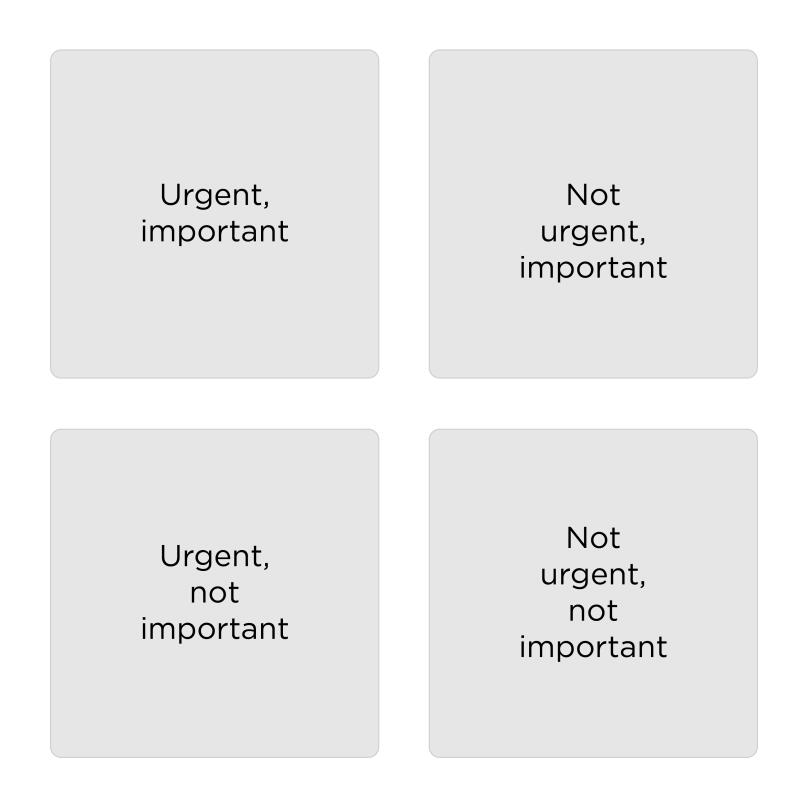Time management
What is time management?

In a nutshell, time management is managing your time effectively. Smart time planning, or time management, makes you feel like your day has a couple of extra hours. Time management can be applied in different areas: managing your working hours, school (for students and schoolchildren), and daily life (for mothers).
Today, not only personal time management but also corporate time management are commonly used when corporate time management methods are built into the company's administration. Corporate time management works well only if there is good communication between managers and employees. After all, new methods that the company is going to implement may be inconvenient for employees and reduce their efficiency instead of improving it. This risk is especially high iif management is using inflexible time management. Therefore, it is important to become aware of problems promptly to adjust methods to corporate time management.
Corporate time management assumes a high degree of motivation and greater freedom instead of constant supervision by a manager. Therefore, when employees choose their own methods and approaches to manage their time, personal time management will be more effective.
How do you manage to do everything? Almost everyone asks themselves this question nowadays. The history of time management goes back more than a decade. Today the basics of time management, however, are more relevant than ever. Not just for adults but for teenagers and children. Time management skills are vital for women who work, run a house, and raise children. Women's time management, in this situation, will include a very broad range of tasks.
A modern-day person must know at least the basic rules of time management to keep pace with the current way of living. Although you should not apply them all at once, there are various time management techniques. You should focus on the method that allows you to achieve the best results in your situation.
Time management system

A time management system contains methods, approaches and techniques that enable you to accomplish more. The time management principles may differ depending on what the underlying concept of a particular system is.
Systems vary depending on which basic principles play the greatest role. Nearly all these techniques are based on prioritising, focusing on important tasks. For example, Stephen Covey's time management matrix is built on prioritising tasks. All tasks are evaluated according to two indicators: urgency, and importance. The urgent and important tasks must be carried out first, while the non-urgent and unimportant ones last.
Stephen Covey's Time Management Matrix

Prioritisation is the main component of numerous management systems. For example, the Franklin pyramid suggests that people first determine their major life goals and values, and only then build short-term plans to get closer to their big goals. The function of the pyramid is to help you find your most important goal and focus on it, in order to work towards realizing this goal regularly and methodically.
The Franklin pyramid

The time management system does not necessarily involve an answer to universal questions about life's purpose and meaning. Authors often suggest simply applying time management methods that enable you to manage your time more effectively.
Time management techniques and methods

Why do you need time management? To manage your time and not waste this precious resource on something that is neither fun nor useful. Simple life hacks and tips will help you focus on the important things and do them more efficiently.
Time management books provide a variety of time management techniques, the following are deemed to be some of the best:
- The tomato principle. The basis of this technique is focus. By fully focusing on their tasks the person performs them more quickly and more effectively. The method got its name from a kitchen timer shaped like a tomato. The inventor of the method, Francesco Cirillo, used the timer to split his time between work and rest. So, for 25 minutes, Cirillo completely focused on solving work tasks, and for about 5 minutes, he rested. This approach allowed him to take control of time-drainers (i.e., distractions).
- The frog method. We all have unpleasant tasks that we must complete nonetheless: make a call, write a report, file paperwork, correct mistakes and solve other problems. The frog method recommends spreading unpleasant tasks evenly throughout the week and starting each day by "eating the frog" (fulfilling an unpleasant task). This will allow you to work more productively during the day because you will no longer have to be worried about doing unpleasant tasks.
- The Swiss cheese method. This "tasty" method of solving problems recommends you to move towards your goal chaotically: "biting off" a piece of a large task. In short, the process of actions in this method can be summarised as follows: first, you need to write down all the tasks that need to be completed to reach your big goal, and then just start doing them in any order, in the same haphazard manner as the holes in a block of Swiss cheese are spread out.
Time management tools must be selected individually: an effective approach for one person will be ineffective for another. Your chosen method should be incorporated into your daily life; otherwise, it will not be helpful. And you can use any convenient means to help you do this: diaries, notebooks, or special apps for time management. To discover more information about these new methods or time management tools, you could enrol into a time management course or find additional training about this subject. Studying enables you to use time management techniques more effectively.























